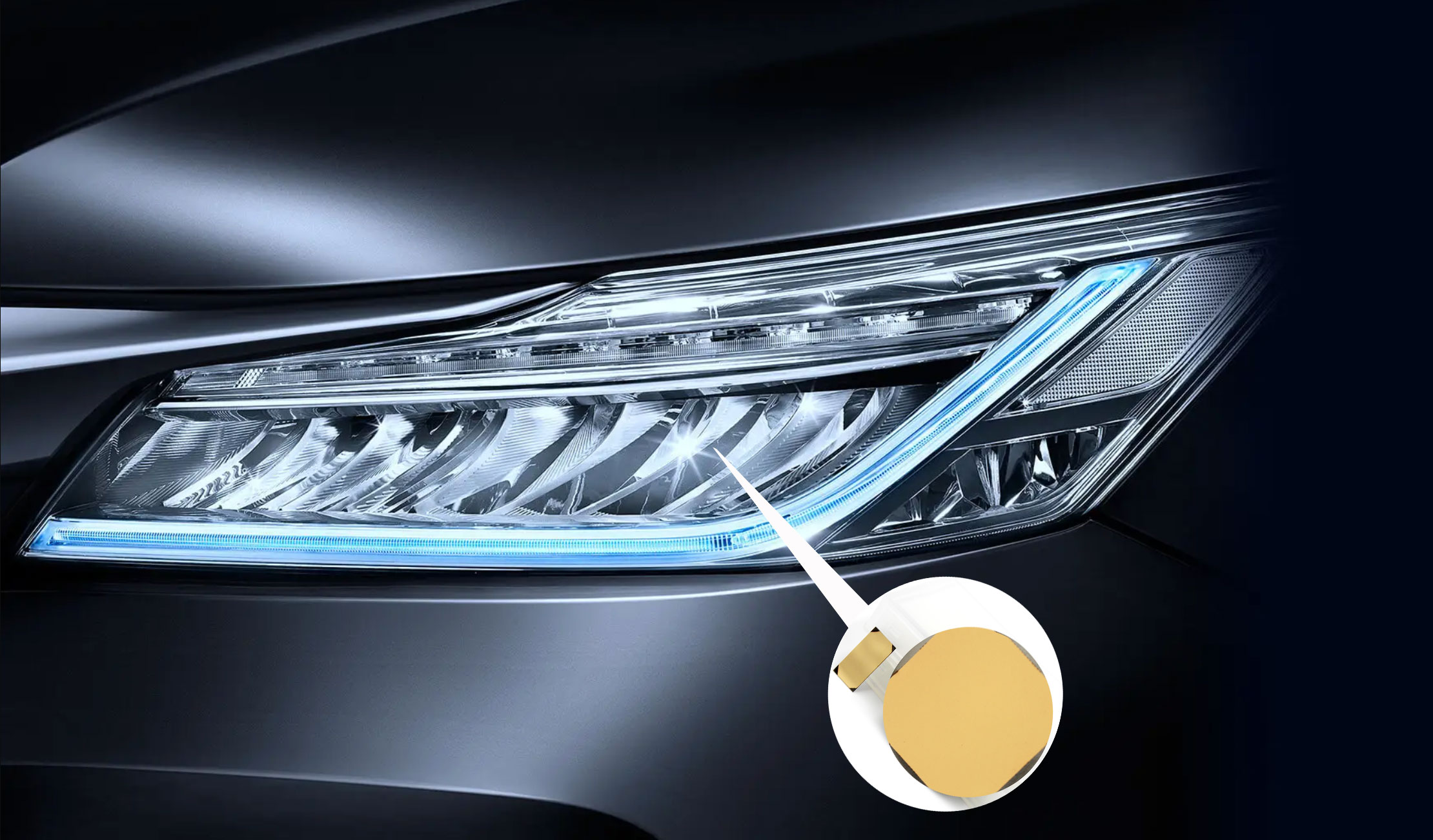The power density of the active area of ultra-high power LED is extremely high, reaching 1kW/cm2 or even higher. The commonly used substrates for traditional epitaxial layers are sapphire, SiC, and Si, with thermal conductivity ranging from 25-400W/(m · K). Even with the use of SiC substrates, it can only be below 200W/cm2, and heat dissipation has become the biggest technical bottleneck for the development of ultra-high power LED devices.Diamond heat sink has a thermal conductivity of 2000W/(m · K), making it an ideal heat dissipation material that can reduce device thermal resistance and improve power density. It is an excellent material for manufacturing high-power LEDs.
In electronics, diamond has many excellent electrical properties, such as a wide bandgap of 5.45eV and a high breakdown electric field of 10MV/cm. The breakdown voltage of diamond is 514 times higher than that of silicon, while 6H SiC, 4H SiC, and GaN are 56, 46, and 34 times higher than silicon, respectively. The operating temperature of the device is greater than 500 ℃, and it has broad application prospects in devices operating at high power, high temperature, and harsh environments.
In terms of thermodynamics, the thermal conductivity of diamond is as high as 2000W/(m · K). Due to the characteristics of the growth process, the microstructure of polycrystalline diamond films exhibits a small columnar structure. Its thermal conductivity has a high degree of anisotropy.
Performance testing:
The heat dissipation performance of diamond wafer is measured by measuring the working temperature of the LED integrated on its surface: the surface of the Si wafer deposited with diamond thin films is directly used to package the LED heating unit, and then tested. The test method is to apply the same power consumption to the LED device, and then record the temperature of the LED device surface at different times (A series has a diamond film heat dissipation layer, B series does not) to measure the heat dissipation effect of the diamond film heat dissipation layer. If there is no heat dissipation layer, directly encapsulating the LED on the Si surface will result in a much faster temperature rise than the layer with heat dissipation. The test results are as follows:
First minute second minute third minute fourth minute fifth minute
A series 50 | 58 | 66 | 74 | 80 |
B series 51 | 71 | 80 | 89 | 95 |
Heat dissipation test results of the sample(Temperature-time)
Obviously, in the A series with a diamond film heat dissipation layer, the temperature decreases faster in the same amount of time, indicating that the diamond film has better heat dissipation effect.

Diamond heat sink is an excellent material for high-power LED heat dissipation. CSMH focuses on the production and preparation of high-quality diamond, continuously promoting the research of diamond heat sink in high-power device heat dissipation. Its core products include diamond wafer, diamond heat sink, diamond window, diamond based heterojunction integrated composite substrates, etc. Diamond heat sink has a thermal conductivity of 1000-2000W/m.k, which will help high-power LEDs easily solve heat dissipation problems.
 闽ICP备2021005558号-1
闽ICP备2021005558号-1Leave A Message